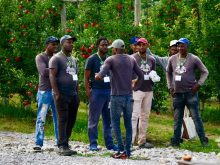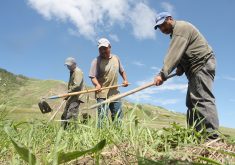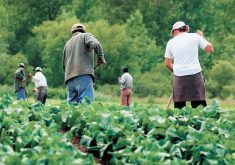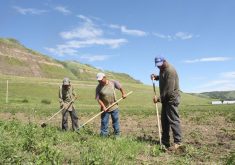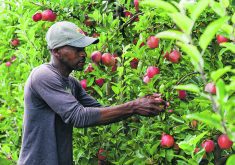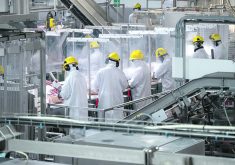The leaders of Hylife Foods feel optimistic about the Temporary Foreign Worker Program.
In October, Hylife announced plans to invest $125 million in its hog barns and Neepawa slaughter and processing plant in Manitoba.
The investment is expected to create 165 jobs, increasing Hylife’s workforce to nearly 2,000.
It made the investment an-nouncement while the federal government is amending the TFWP.
Hylife and most meat processers are highly dependent on foreign workers because the industry can’t attract enough Canadians to work at slaughter plants.
Read Also

Europe holds promise for Canadian lentils
Pulse Canada is trying to help boost lentil consumption in Europe, which is already the fourth largest market.
Hylife president Claude Vielfaure said he’s confident the government is on the right path.
“We feel there might be some positive steps in making the program work for rural-based agricultural companies.”
The Liberal government began reviewing the TFWP last spring after complaints from business leaders, particularly those from the agri-food industry.
The former Conservative government amended the program in 2011 and 2014. One key change was the amount of time that foreigners can remain in Canada. Now, foreign workers in most industries can stay here for only two years: a one-year work permit plus a one-year extension. Previously they could stay four years: a two-year permit plus a two-year extension.
Primary agriculture was exempt from this change.
Maple Leaf Foods and others in the meat sector say the new rule has “broken” the path for foreign workers to become permanent residents because there isn’t enough time to learn English.
Vielfaure said restoring the two-year permit and two year extension is critical for Hylife, but the company also needs flexibility on the number of foreign workers it can employ.
The Conservative government capped the percentage of foreign workers a company could employ. It was scheduled to drop from 30 to 20 and then 10 percent. The 10 percent cap was to take effect July 1, but the Liberals over-ruled that and froze the cap at 20 percent.
Vielfaure hopes the Liberals will relax the cap when it is appropriate to do so.
“(We’re) hoping there is leeway for proven companies … if you can prove there is a need to be higher (percentage),” he said.
“We are in an area of low unemployment, (but) we try to recruit as much locally as we can. But it (the region) just doesn’t have enough population.”
Hylife currently has enough workers because it has a low rate of employee turnover, Vielfaure said.
It has recruited hundreds of employees from countries such as South Korea, the Philippines and Ukraine. Many of them are now residents of Neepawa, a community of about 5,000.
However, the company will soon need more employees and additional foreign workers.
“It’s going to be a concern for us in the next one to two years,” Vielfaure said.
Mark Wales, chair of the Canadian Agricultural Human Resource Council, which focuses on the labour shortage in Canada’s agri-food industry, said the federal government wants to attract more immigrants.
If that’s the case, Wales said it’s illogical to kick a temporary foreign worker, a person with a job, out of the country before he or she has an opportunity to become a permanent resident of Canada.
Wales and many others in the agri-food industry continue to lobby politicians and federal bureaucrats as they wait for a decision on the TFWP.
Vielfaure may be optimistic about the government’s plans, but an Ottawa lobbyist isn’t so sure. The lobbyist, who isn’t authorized to speak for her organization, said federal officials don’t comprehend the size of the agriculture sector and huge number of jobs in the industry.
Consequently, it’s been a struggle to explain why temporary foreign workers are needed.
MaryAnn Mihychuk, federal minister of employment, workforce development and labour, is expected to release the government’s plan for temporary foreign workers in December.




